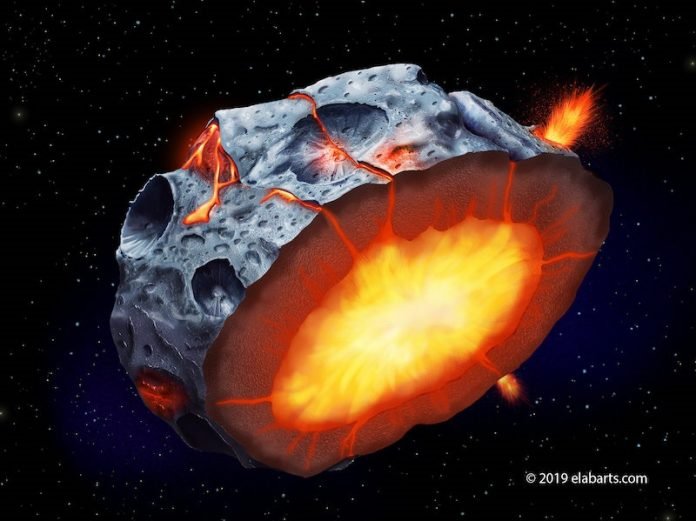
In a new study, scientists suggest that as a metallic asteroid cooled and solidified, iron volcanoes may have erupted onto its surface.
This is the finding from an analysis by planetary scientists at UC Santa Cruz.
The research is part of NASA’s plans to launch a probe to Psyche, which is the largest metallic asteroid in the solar system.
NASA’s Psyche mission is scheduled to launch in 2022 and reach the asteroid in 2026.
Metallic asteroids formed early in the history of the solar system when planets were beginning to form.
Previous research has shown that a protoplanet involved in a catastrophic collision could be stripped of its rocky outer layers and expose a molten, iron-rich core.
The blob of liquid metal would cool and solidify very quickly in the cold of space.
In the study, the team focused on building models of how the asteroids cooled and solidified. They analyzed iron meteorites to find out the composition of metallic asteroids.
They found that iron volcanos on the surface of the asteroid may have erupted.
The researchers explained that sometimes the asteroids could have a solid sheet of metal on the surface with liquid metal underneath.
If an asteroid is a mostly pure iron, it is possible to find eruptions of low-viscosity surface flows spreading out in thin sheets.
If an asteroid has light elements mixed in and gases that expand rapidly, there may be explosive volcanism that might leave pits in the surface.
It depends on the composition of the melt in the asteroid.
The team suggests that the iron volcanos are hard to observe and analyze because metallic asteroids solidified very quickly after their formation.
There could be billions of years for any surface features of volcanism to be degraded.
According to them, the best way to find evidence of volcano eruptions on metallic asteroids may be studying iron meteorites on Earth.
One study author is Francis Nimmo, professor of Earth and planetary sciences.
The finding is published in Geophysical Research Letters. It was presented at a recent Lunar and Planetary Science Conference.
Copyright © 2019 Knowridge Science Report. All rights reserved.



